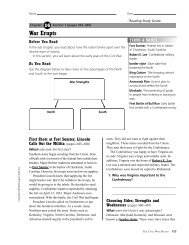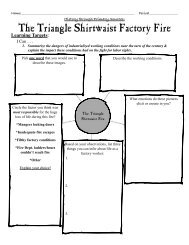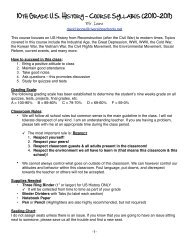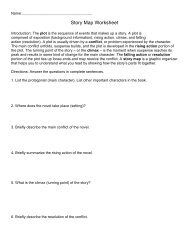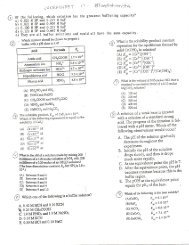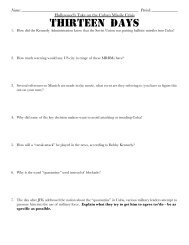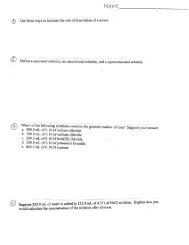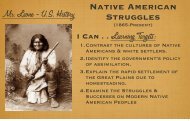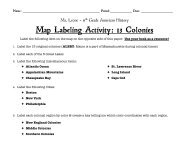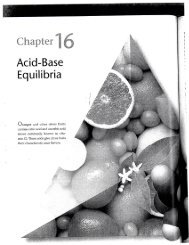Fever, 1793 Review Sheet
Fever, 1793 Review Sheet
Fever, 1793 Review Sheet
Create successful ePaper yourself
Turn your PDF publications into a flip-book with our unique Google optimized e-Paper software.
Round character – Changes as a result of what happens to him or her; well developedcharacterDynamic character – A character who changes inside as a result of what happens tohim/her; he or she is a different person at the end [ex: Mattie]Protagonist – The main character in the storyAntagonist – The character or force that opposes the protagonist; in conflict with theprotagonist, not necessary the “bad” guy; as a force, it could be nature, society, technology.Setting – Time and/or place of storyMinor characters – Almost always flat. They have only one or two striking qualities. They areusually all good or all bad. Such characters can be interesting or amusing in their own right, butthey lack depth.Flat character – character with only one outstanding trait or feature; not developedStatic character – A character that does not internally change throughout the story.Flat characters are sometimes referred to as static characters.Point of view – angle story is told from; who tells the story and how much he/she knows.First person – The narrator is a character in the story who can reveal only personal thoughtsand feelings and what he or she sees and is told by other characters. He can’t tell us thoughtsof other characters. Uses “I” pronouns;Conflict – problem that makes the story take off. The essence of fiction. It creates plot. Theconflicts we encounter can usually be indentified as one of four kinds: man versus man, manversus nature, man versus society, or man versus self.Mood – The climate of feeling in a literary work. The choice of setting, objects, details, imagesand words all contribute towards creating a specific mood.Tone – The author’s attitude, stated or implied, toward a subject. Some possible attitudes areoptimism, seriousness, humorous, joyful. An author’s tone can be revealed through choice ofwords and details.Inference – Drawing conclusions that are not specifically stated [to imply or infer]Figurative language – Whenever you describe something by comparing it with something else,your are using figurative language. Any language that goes beyond the literal meaning of wordsin order to furnish new effects or fresh insights into an idea or subject.



